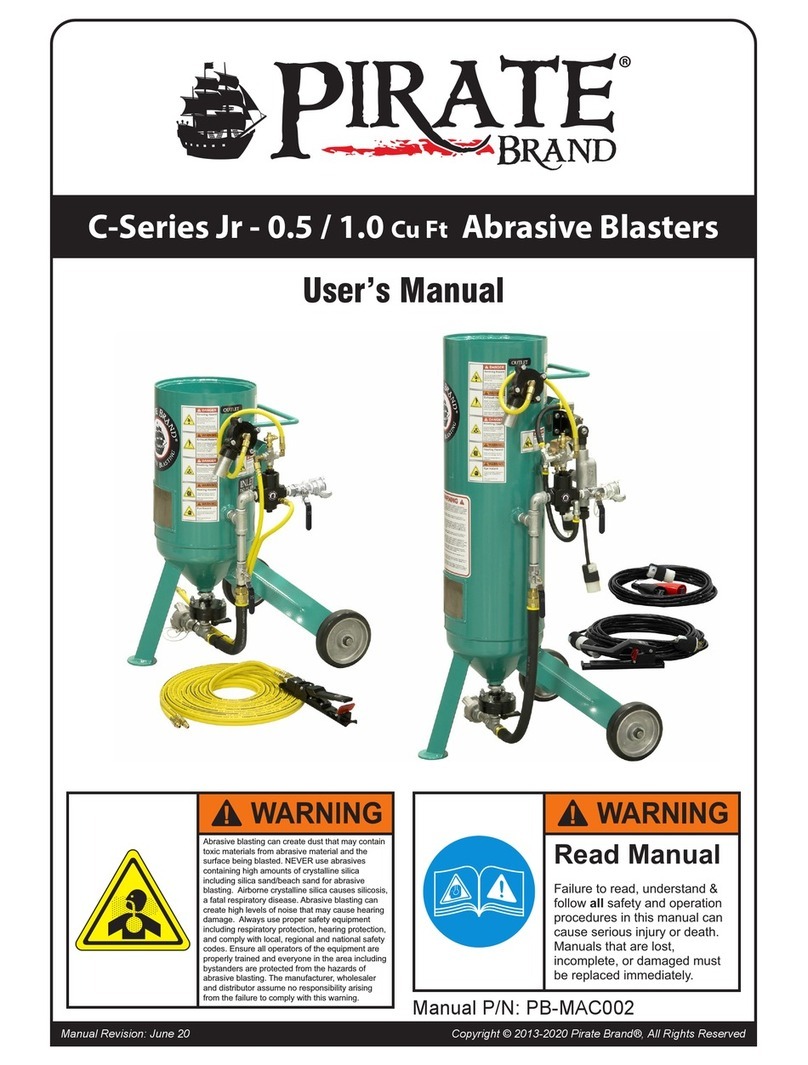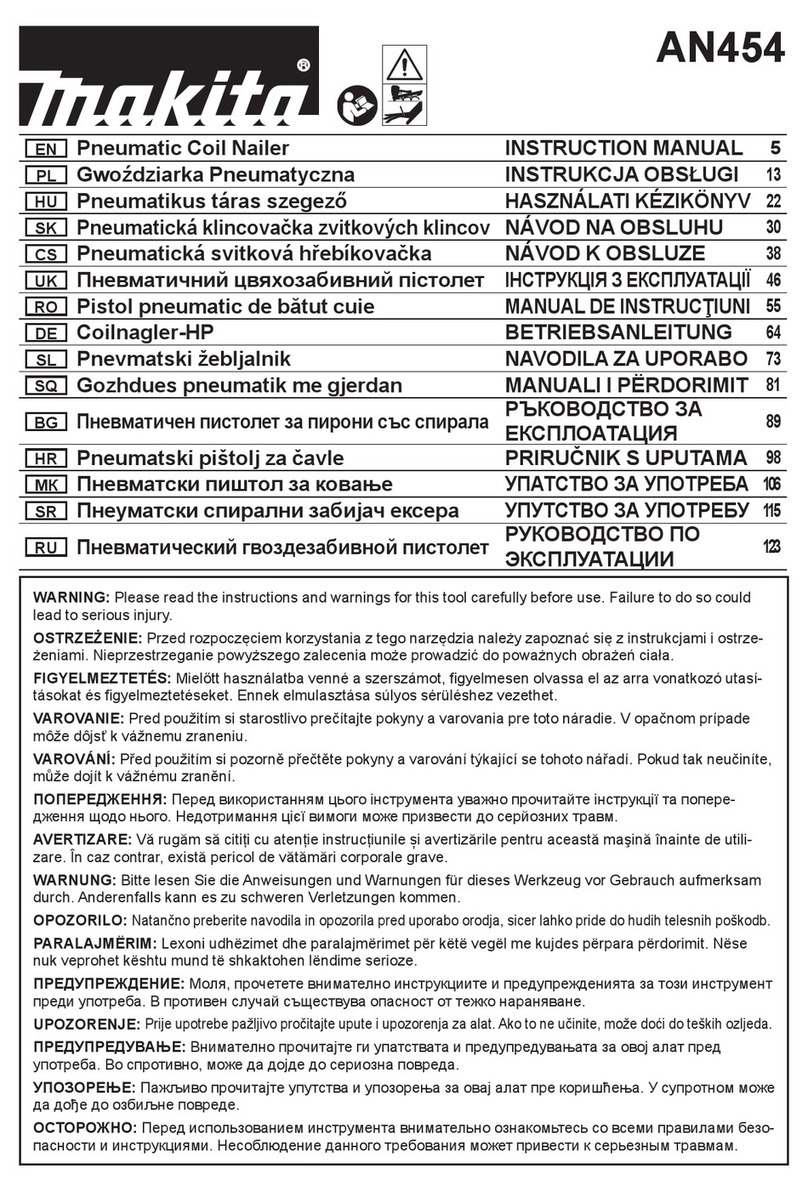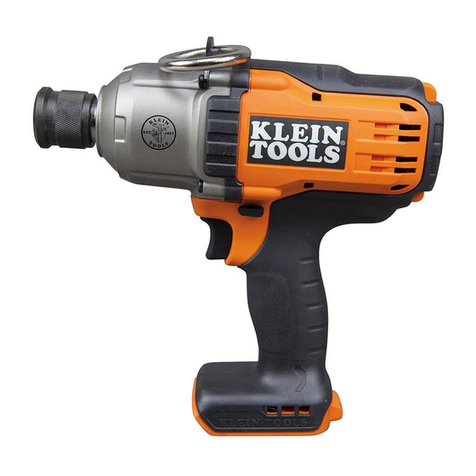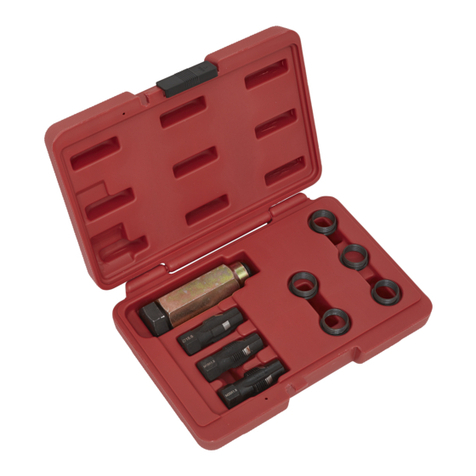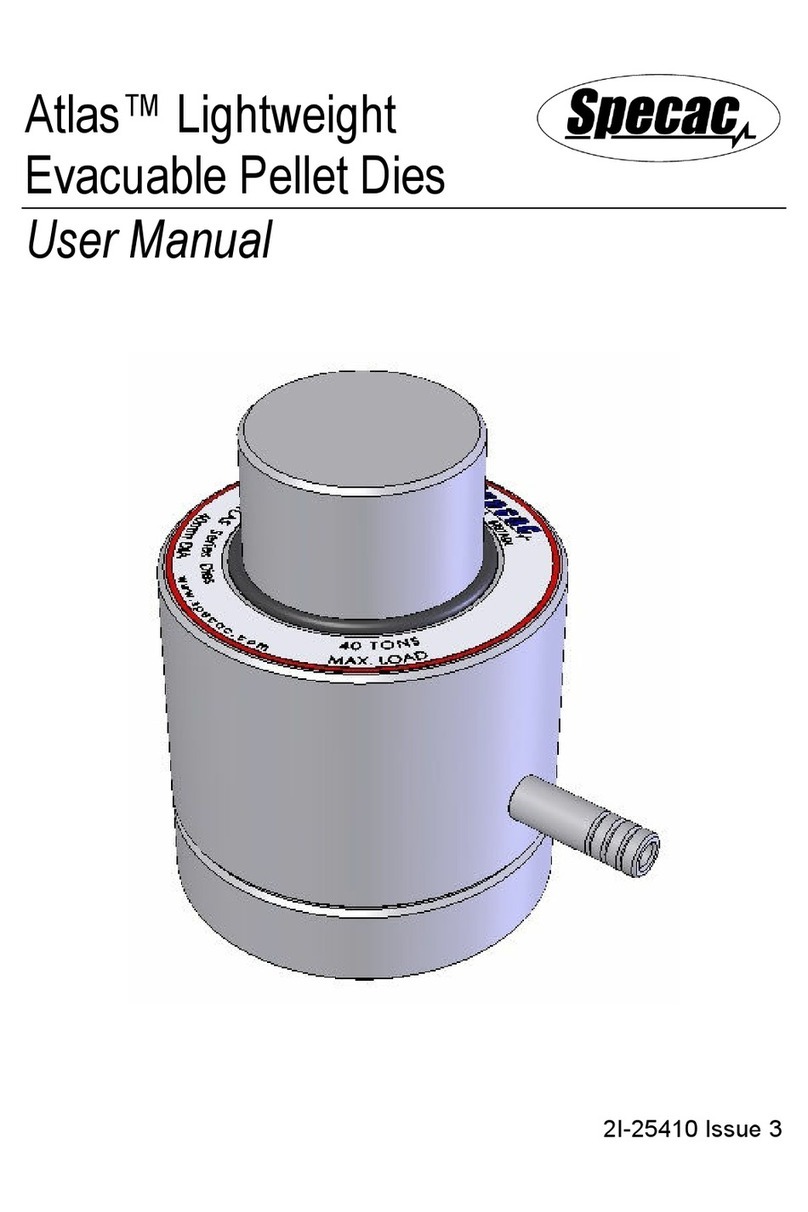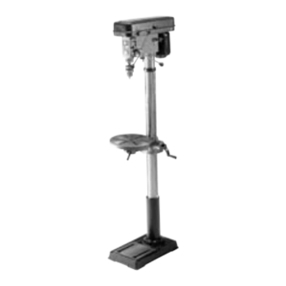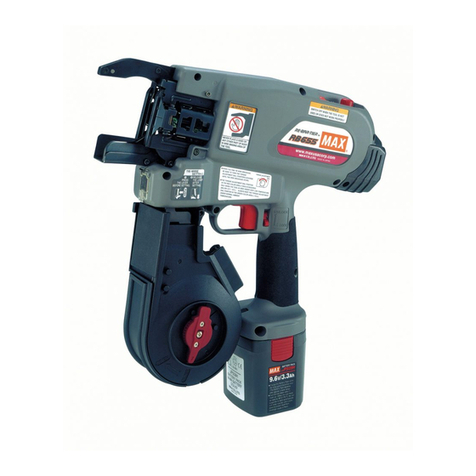Pirate C Series User manual

Manual Revision: Feb 18 Copyright © 2011-2018 Pirate Brand®, All Rights Reserved
User’s Manual
Read Manual
Failure to read, understand &
follow all safety and operation
procedures in this manual can
cause serious injury or death.
Manuals that are lost,
incomplete, or damaged must
be replaced immediately.
Manual P/N: PB-MAC001
Abrasive blasting can create dust that may contain
toxic materials from abrasive material and the
surface being blasted. NEVER use abrasives
containing high amounts of crystalline silica
including silica sand/beach sand for abrasive
blasting. Airborne crystalline silica causes silicosis,
a fatal respiratory disease. Abrasive blasting can
create high levels of noise that may cause hearing
damage. Always use proper safety equipment
including respiratory protection, hearing protection,
and comply with local, regional and national safety
codes. Ensure all operators of the equipment are
properly trained and everyone in the area including
bystanders are protected from the hazards of
abrasive blasting. The manufacturer, wholesaler
and distributor assume no responsibility arising
from the failure to comply with this warning.
C-Series - 3.0 / 6.0 Cu Ft Abrasive Blasters

Manual Revision: Feb 18 Copyright © 2011-2018 Pirate Brand®, All Rights Reserved
2
C-Series - 3.0 / 6.0 Cu Ft User’s Manual
Using This Manual
Thank you for your purchase of a Pirate Brand® CPR Series Blaster. It is important to note that
all Pirate Brand® blasting equipment is designed to be safe when used properly, however, misuse of any
abrasive blasting equipment is dangerous and can result in the severe injury or death of the operator and
others in the vicinity of the blasting equipment. In order to protect yourself and those around you, read
and follow all sections of this manual & warning labels located on the blasting equipment.
Denition Of Terms Used In This Manual
Abrasive: A granular material used for blasting the surface of an object. Also referred to as “Media.”
Blow-down: The automatic or manual release of air from a pressurized vessel. Also referred to as “Depressurize.”
Control Handle: A required device that allows the blaster to be remotely started and stopped. Also referred to as
“Deadman.”
Depressurize: The automatic or manual release of air from a pressurized vessel. Also known as “Blow-down”.
Pressure Hold System: Any blasting system in which the Pressure Vessel remains pressurized when the control
handle is released. Also known as a Manual Blow-down System.
Pressure Release System: Any blasting system in which the Pressure Vessel is automatically depressurized when
the control handle is released. Also known as an Automatic Blow-down System.
Pressure Vessel: The enclosed area of the blaster in which abrasive is contained and lled with pressurized air when
blasting.
Pressurize: To ll the pressure vessel with compressed air.
Properly Trained: A person who can be considered “properly trained” must have successfully completed a
sandblasting training course that focuses on the safe operation of stationary or portable abrasive blasters in the 0.5 -
6.0 cu ft capacity range. They must also have read and understood this manual in its entirety.
Silica: A hazardous substance which is contained in many naturally occurring abrasives. Dust produced by blasting
with abrasives containing silica can cause respiratory disease. Do not use abrasive containing silica under any
circumstance, even when respiratory protective equipment is being used.
Safety Symbols
The safety symbols shown below exist for the safety and protection of the operator and those in the
vicinity of the Abrasive Blaster. The descriptions below explain how they are used in relation to the
blasting equipment.
WARNING: This symbol calls attention to a
potentially hazardous situation that could result
in serious injury or death if the instructions
associated with the symbol are not followed. The
warning triangle will be displayed throughout the
manual to denote instructions to which special
attention should be paid.
DANGER: This symbol calls attention to a
potentially hazardous situation that WILL result
in serious injury or death if the instructions
associated with the symbol are not followed. The
warning triangle will be displayed throughout the
manual to denote instructions to which special
attention should be paid.
OR OR

Manual Revision: Feb 18 Copyright © 2011-2018 Pirate Brand®, All Rights Reserved
3
C-Series - 3.0 / 6.0 Cu Ft User’s Manual
• All persons who will be operating or will be in the vicinity of the Abrasive Blaster during its
operation must receive proper training on how to safely operate the equipment and be informed
of the potential hazards involved. In addition to proper training, all persons who will be operating
or will be in the vicinity of the Abrasive Blaster during its operation must read, understand and
follow all procedures described in the user’s manual. For replacement manuals, please contact
your distributor or visit www.pirate-brand.com.
• Respiratory protection is mandatory for all persons operating or located in the vicinity of the
Abrasive Blaster. Follow all OSHA and NIOSH requirements for breathing equipment and
supplied air standards.
• Pressurized Vessels contain large amounts of stored energy and can cause severe injury or
death if safety procedures are not followed. Never perform maintenance or attempt to open
a Pressure Vessel for any reason while it is Pressurized. Always Depressurize and properly
disconnect equipment from its air source before performing any maintenance. Do not modify,
grind or weld on the pressure vessel for any reason. Doing so will void the ASME certification.
Do not use damaged pressure vessels.
• The use of proper remote control systems (commonly referred to as Dead-man controls) are
required when using abrasive blasters. Never operate the Abrasive Blaster without remote
controls.
• All persons who will be operating or will be in the vicinity of the Abrasive Blaster during its
operation must protect themselves with the proper safety equipment and use of common sense.
Safety equipment including but not limited to Hearing, Eye, Body and Lung protection are
required. Abrasive blasters and the objects being blasted can be heavy and can lead to severe
injury or death if they fall over. Always follow all safety requirements of OSHA and NIOSH.
• Use only Genuine Pirate Brand® replacement parts when performing maintenance on the
Abrasive Blaster. Do not modify the equipment for any reason. Use of modified or non-Pirate
Brand® parts can cause an unsafe situation and will void your warranty.
• Never use malfunctioning or damaged equipment. Before each use, inspect the Abrasive
Blaster for proper function.
• Supply only cool, dry, compressed air that is free of debris to the Abrasive Blaster. Moisture
or debris that reaches the remote control system can cause an unsafe situation. Do not supply
compressed air to the blaster that exceeds 150 psi.
• Do not use abrasive blasters in areas that could be considered a hazardous location as
described in the National Electric Code NFPA 70, Article 500. Never use the Abrasive Blaster in
wet environments. Always connect electrically controlled abrasive blasters to a Ground Fault
Circuit Interrupter (GFCI).

Manual Revision: Feb 18 Copyright © 2011-2018 Pirate Brand®, All Rights Reserved
4
C-Series - 3.0 / 6.0 Cu Ft User’s Manual
Table Of Contents
Using This Manual
Denition Of Terms
Safety Symbols
WARNINGS
Safety Label Information
How CPR Systems Work
OPERATING PROCEDURES
Set-Up 8
Before You Blast 9
Blasting 10
MAINTENANCE PROCEDURES
TROUBLESHOOTING
Warranty
Pressure Vessel Parts Lists
Pipe String Parts Lists
3.0 Cu Ft Pneumatic Controls 18
6.0 Cu Ft Pneumatic Controls 20
Electric Controls 22
MPV Metering Valve Option 23
Valve Parts Lists
Control Handle Parts Lists
Blasting Set-Up
Available Accessories
Blasting Chart
2
2
2
3
5
6
8
12
14
16
17
18
24
31
32
34
36
. . . . . . . . . . . . . . . . .
. . . . . . . . . . . . . . . . .
. . . . . . . . . . . . . . . . . . . .
. . . . . . . . . . . . . . . . . . . . . .
. . . . . . . . . . . . .
. . . . . . . . . . . .
. . . . . . . .
. . . . . .
. . . . . . . . . . . . . .
. . . . . . . . . . . . . . . . . . . . . . . . .
. . . . . . . . . .
. . . . . . . . . . . . . . .
. . . . . . . . . . . . . . . . . . .
. . . . . . . . . . .
. . . . . . . . . . . . . . . . . . . .
. . . . . . . . . . . . . . .
. . . . . . . . . . . . . . . . . . . . .
Distributed By:
Contact Info:
For manual updates visit the
Pirate Brand® website at:
www.pirate-brand.com

Manual Revision: Feb 18 Copyright © 2011-2018 Pirate Brand®, All Rights Reserved
5
C-Series - 3.0 / 6.0 Cu Ft User’s Manual
Warning Label Locations
1 - Explosion Hazard (X2)
2 - Severing Hazard (X2)
3 - Read Manual
4 - Crush Hazard
5 - Exhaust Hazard
6 - Breathing Hazard
7 - Hearing Hazard
8 - Eye Hazard
9 - Pressurized Hose
10 - Spray Hazard
11 - WARNING Label
12 - Made In Indiana
13 - CPR Series Label
14 - Inlet Label
15 - Outlet Label
16 - 12VDC Label
17 - Pirate Brand® Label
Instructions For Installing Replacement Label Pack
1. Completely remove old label and clean area thoroughly before applying new label.
2. Apply replacement labels in locations as described above or as close as possible if area is obstructed
3. 12 VDC Label (#16) is only to be used on electric remote controlled systems. DO NOT apply label to systems with pneumatic remote
controls.
Labels must be replaced when they are no longer readable!
Replacement Label Pack P/N: PB-LPC001

Manual Revision: Feb 18 Copyright © 2011-2018 Pirate Brand®, All Rights Reserved
6
C-Series - 3.0 / 6.0 Cu Ft User’s Manual
How CPR Systems Work
(Pressure Release)
WARNING: This section of the manual is designed to give you a general understanding of how
the Abrasive Blaster functions. All sections of this manual must be read and understood before
operating the equipment.
Flow of Compressed Air
Flow of Abrasive
Flow of Exhaust Air
During Blow-down
ADDING ABRASIVE
Abrasive is added through the hole in the top of the Abrasive Blaster where the Pop-up and its seat are
located. When abrasive is added, it ows down through the hole, around the Pop-up, and down to the
bottom of the pressure vessel where it will exit through the Metering Valve when blasting is started.
PRESSURIZATION
When a compressed air source (such as an air-compressor) is connected to the inlet of the Abrasive
Blaster and the Inlet Shut-Off Valve is opened, compressed air ows to the Inlet Valve where it is stopped.
When the control handle is activated, the Inlet Valve opens and air ows into the Pressure Vessel causing
the Pop-up (located internally) to seal against its seat. Simultaneously, the Diaphragm Valve (Outlet Valve
on older models) closes sealing the Pressure Vessel allowing it to hold pressure. Air will also continue
past the Choke Valve, through the Pusher Line, and nally to the “Y” under the Metering Valve where it
is mixed with abrasive. The mixture of compressed air and abrasive will now exit the Abrasive Blaster
through a blast hose and nozzle connected to the coupling under the Metering Valve and blasting begins.
It is important to note that, some abrasive will collect at the base of the Metering Valve causing the blast
hose to pulsate and spray abrasive erratically for a short time while pressure builds up in the pressure
vessel. This is normal and will not damage the Abrasive Blaster.
DEPRESSURIZATION (BLOW-DOWN)
When the control handle is released in a pressure release (CPR) system, the Inlet Valve automatically
closes stopping the ow of compressed air into the Pressure Vessel. Simultaneously, the Diaphragm
Valve (Outlet Valve on older models) opens allowing the compressed air in the pressure vessel to exit the
Abrasive Blaster through the Diaphragm Valve (Abrasive Trap & Outlet Valve on older models), and nally
through the Mufer. When all the pressure in the Pressure Vessel is released, blasting stops.

Manual Revision: Feb 18 Copyright © 2011-2018 Pirate Brand®, All Rights Reserved
7
C-Series - 3.0 / 6.0 Cu Ft User’s Manual
Compressed
Air Inlet
Air
/ Abrasive Mix
To
Blasting Nozzle
Loaded Abrasive
Inlet
Valve Inlet
Shut-Off
Valve
Choke
Valve
Metering
Valve
Pressure
Vessel
Pop-up
Pusher
Line
Exhausted
Air
Diaphragm
Valve
(Outlet Valve /
Abrasive Trap On
Older Models)
Muffler
How CPR Systems Work
(Pressure Release)
Some items moved or rotated for clarity.

Manual Revision: Feb 18 Copyright © 2011-2018 Pirate Brand®, All Rights Reserved
8
C-Series - 3.0 / 6.0 Cu Ft User’s Manual
Inlet
Valve
Inlet
Shut-Off
Valve
Choke
Valve
Metering
Valve
Pressure
Vessel
Pop-up
Pusher
Line
Inlet Valve
Petcock
Nozzle
Blast
Hose
Control
Handle
Compressed
Air Supply
Hose
Diaphragm
Valve
(Outlet Valve /
Abrasive Trap On
Older Models)
Muffler
Operating Procedures
WARNING: The Procedures provided in the Operating Procedures section of the manual are designed to
provide basic information on how to safely operate the features of Pirate Brand® CPR Series Abrasive
Blasters. Only personnel thoroughly trained in abrasive blasting should operate the Abrasive Blaster.
Setting-Up The Blaster
INSPECT PRESSURE VESSEL
When you receive your Abrasive Blaster, remove the
Handway Assembly and check for foreign items that may
have fallen into the Abrasive Blaster through the Pop-up
opening. Remove any foreign materials and reinstall the
Handway Assembly.
DANGER: Never perform any maintenance or
attempt to open the Abrasive Blaster in any way
while it is pressurized. The violent release of
compressed air and propelled objects will cause
serious injury or death.
RE-TIGHTEN HANDWAY ASSEMBLY
After the Abrasive Blaster has been pressurized for the rst
time, tighten the nut on the Handway Assembly. Tightening
the nut on the Handway Assembly should also be done any
time after the handway has been removed for maintenance
before and after the next pressurization.
DANGER: Never perform any maintenance or
attempt to open the Abrasive Blaster in any way
while it is pressurized. The violent release of
compressed air and propelled objects will cause
serious injury or death.
PURGE AIR SUPPLY HOSE
Before connecting the Air Supply Hose to the Abrasive
Blaster, purge the hose of any moisture or foreign debris.
Standing water or moisture in the air line will cause
degraded performance of the Abrasive Blaster. Air supplied
to the Abrasive Blaster must be clean, dry and cool.
ATTACH REMOTE CONTROL HANDLE
Attach the Remote Control Handle to the Blast Hose near
the Nozzle with hose clamps or heavy wire ties. Form a loop
of Twinline/Control Cord that comes 6” away from the Blast
Hose, runs 6” parallel to the Blast Hose, and comes 6” back
to the Blast Hose. Using duct tape, attach the Twinline/
Control Cord to the Blast Hose where the loop ends by
wrapping the tape around the Twinline/Control Cord twice
and then around the Blast Hose. This creates a strain-relief
attachment and is only necessary on the rst connection
near the Control Handle. Starting from the Nozzle end of
the Blast Hose, attach the Twinline/Control Cord to the blast
hose by wrapping duct tape around both every 3 feet.
6”
6”
6”
See page
11 for larger
diagram
of blaster
components

Manual Revision: Feb 18 Copyright © 2011-2018 Pirate Brand®, All Rights Reserved
9
C-Series - 3.0 / 6.0 Cu Ft User’s Manual
Operating Procedures
PRE-BLAST CHECK
Before each use of the Abrasive Blaster, it must be checked
to ensure it is in a safe condition to be used. Closely
examine all components of the Abrasive Blaster for signs
of excessive wear, worn out seals and hoses, or damaged
components. If any component of the Abrasive Blaster is
found to be damaged or worn, it must be replaced before
blasting.
WARNING: Never use an Abrasive Blaster if any
components are damaged or worn. Damaged or
worn parts must be replaced before use.
ADDING ABRASIVE
Before lling the Abrasive Blaster, make sure the Inlet Shut-
Off Valve is closed, the Inlet Valve Petcock is open, and
the pressure vessel is in a depressurized state. Abrasive
is added by pouring it into the top of the Abrasive Blaster
where it can ow around the Pop-up and into the pressure
vessel. Do not overll the Abrasive Blaster. Do not allow
foreign materials to enter the Abrasive Blaster. It is
recommended that a screen be used to prevent foreign
objects from entering the Abrasive Blaster.
DANGER: Never reach into the Pop-up opening
while lling the Abrasive Blaster. It can close
without warning causing severe injury or death.
WARNING: Pirate Brand® Abrasive Blasters may
not be used with abrasives containing silica.
Never use abrasives containing silica.
WARNING: Never ll the abrasive blaster with
the Inlet Shut-Off Valve in the open position.
Always close the Inlet Shut-Off Valve before
lling.
WARNING: Electrically conductive abrasives
may not be used with the abrasive blasters using
Electric Remote Control Systems without
changing to sealed strain relief connectors.
WARNING: Never attempt to move or transport
the Abrasive Blaster when it contains Abrasive.
REMOTE CONTROL SYSTEM
Abrasive Blasters must use a Remote Control System
(commonly known as a deadman) to start and stop
abrasive blasting. Remote Control Systems can be electric
or pneumatic.
Electric: Connect the Remote Control Handle to the
Abrasive Blaster’s female twist-lock connector. Connect a
12 VDC power source (12V Battery or Optional 120 VAC to
12 VDC converter) to the Abrasive Blaster’s male twist-lock
connector.
Pneumatic: Connect the Remote Control twinline hose to
the Abrasive Blaster using the supplied threaded ttings.
It is not recommended that Pneumatic Remote Control
Systems are used when the Blast Hose length will be
longer than 100 feet.
WARNING: Never operate the Abrasive Blaster
without a Remote Control System.
DANGER: Always use caution around electric
sources to avoid electric shock. Do not operate
electrical remote controlled Abrasive Blasters in
wet or other hazardous environments
CONNECTING HOSES
Before connecting hoses to the Abrasive Blaster, make
sure the Inlet Shut-Off Valve is closed and the compressed
air supply is shut off. Connect the hose coming from the
compressed air supply to the inlet on the Abrasive Blaster
and secure with safety clips. Connect the blast hose to the
coupling by the Metering Valve at the base of the Abrasive
Blaster and secure with safety clips.
WARNING: Always use safety devices like clips
and whip-checks (safety cables) at hose
connections.
Before You Blast

Manual Revision: Feb 18 Copyright © 2011-2018 Pirate Brand®, All Rights Reserved
10
C-Series - 3.0 / 6.0 Cu Ft User’s Manual
PRESSURIZING THE ABRASIVE BLASTER
Before pressurizing the Abrasive Blaster make sure the
following conditions occur:
• All “BEFORE YOU BLAST” procedures have
been followed.
• The Inlet Shut-Off Valve is closed.
• The Inlet Valve Petcock is closed.
• The Remote Control Handle is released.
• All hose connections are secure and have a
safety clip installed.
• The Abrasive Blaster is set up in a safe and
level location where all people in the vicinity
are aware of its presence.
• All necessary safety equipment is present and
being worn by all people in the vicinity of the
Abrasive Blaster.
• Only personnel who have been thoroughly
trained and have read and understand the
manual are in the vicinity of the Abrasive
Blaster
When these conditions are met, turn on the compressed air
source and open the Inlet Shut-Off Valve on the Abrasive
Blaster. The Abrasive Blaster is now ready to begin blasting.
DANGER: Never perform any maintenance or
attempt to open the Abrasive Blaster in any way
while it is pressurized. The violent release of
compressed air and propelled objects will cause
serious injury or death.
DANGER: Never supply compressed air
exceeding 150 PSI (10.3 BAR) to the Abrasive
Blaster.
WARNING: The Blast Hose may kick back when
Remote Control Handle is activated. Be
prepared and brace yourself for kick back.
Blast Hoses will normally kick back erratically for
a short time when the Abrasive Blaster is started.
WARNING: All those who will be in the area
while blasting is to occur must be properly
trained, read the manual, and wearing safety
equipment to protect from the hazards described
by the WARNING and DANGER labels located
on the Abrasive Blaster. If any labels are worn
or missing they must be replaced.
WARNING: 100 PSI Minimum. Failure to provide
a constant air supply of at least 100 PSI can
cause excessive wear to multiple components
and the control system to operate improperly.
USING THE ABRASIVE BLASTER
After pressurizing the Abrasive Blaster, it is ready to begin
blasting. Fold down safety ap lever lock and squeeze the
Remote Control Handle to start the ow of abrasive and
compressed air. Adjustments to the air/abrasive mixture
can be made by swinging the handle/turning the knob on
the Metering Valve. There will be a delay between a change
made at the Metering Valve and what comes out of the
Nozzle depending on the length of Blast Hose being used.
To stop the ow of compressed air and abrasive, release
the Remote Control Handle and blasting will stop after a
short time. How long it takes for blasting to stop will depend
on the length of Blast Hose being used. The pressure vessel
will automatically exhaust through the Exhaust Mufer
causing a rush of compressed air that can propel any loose
objects, debris or spilled abrasive at nearby personnel.
For this reason, personnel must not be located near the
Abrasive Blaster when blasting is taking place.
DANGER: Airborne particles produced by
abrasive blasting can cause respiratory disease.
All persons operating or located near the blasting
site must wear approved NIOSH / OSHA
approved breathing equipment. Never use
abrasive containing silica.
DANGER: Never stand near an Abrasive Blaster
when it is in operation. The release of the
Remote Control handle will cause a sudden
release of compressed air from the Exhaust
Mufer without warning. Only Adjust the
Metering Valve after the Abrasive Blaster has
completely depressurized.
WARNING: Only personnel thoroughly trained in
abrasive blasting should operate the Abrasive
Blaster. This manual only provides basic
information on how to safely operate the features
of Pirate Brand® CPR Series Abrasive
Blasters.
WARNING: Never point the blast Nozzle at
yourself, other people, or the Abrasive Blaster.
WARNING: The Choke Valve must be completely
open when blasting or damage to equipment will
occur.
Operating Procedures
Blasting

Manual Revision: Feb 18 Copyright © 2011-2018 Pirate Brand®, All Rights Reserved
11
C-Series - 3.0 / 6.0 Cu Ft User’s Manual
Operating Procedures
Blasting
DRAINING THE MOISTURE SEPARATOR (if equipped)
During blasting, the Moisture Separator must be periodically
drained. The best way to accomplish this is to leave the
drain valve slightly open all the time so it constantly leaks
air and forces moisture out.
WARNING: The Abrasive Blaster must be
supplied with clean, cool, dry compressed
air in order to function properly.
SHUTTING DOWN THE ABRASIVE BLASTER
When blasting is complete, the Abrasive Blaster will need
to be shut down. Make sure the Remote Control Handle is
released then close the Inlet Shut-Off Valve and open the
Inlet Valve Petcock.
WARNING: Never operate the Abrasive Blaster
without an Exhaust Mufer. Without the mufer,
the sudden release of compressed air can cause
severe injury.
DISCONNECTING AIR SUPPLY HOSE
After the Abrasive Blaster has been depressurized and the
Inlet Valve has been closed, the Compressed Air Supply
Hose may still contain pressure which must be released
before disconnecting the hose. To do this shut off the
compressed air at its source and open the Inlet Shut-Off
Valve on the Abrasive Blaster.
Next, open the petcock at the top of the Inlet Valve. For
systems with electric remote controls, you must be
connected to a power source and hold down the Remote
Control Handle to allow air to bleed out through the Inlet
Valve Petcock.
When you no longer hear air escaping through the Inlet
Valve Petcock, squeeze the Compressed Air Supply Hose
to conrm it is soft and does not contain compressed air.
After conrming the absence of compressed air in the
Compressed Air Supply Hos,e it is ready to be disconnected.
DANGER: Never disconnect any compressed air
supply hose without rst performing the
“DISCONNECTING AIR SUPPLY HOSE”
procedure described above. Failure to do so
can cause the hose to blow off violently injuring
or killing nearby people.
Inlet
Valve
Inlet
Shut-Off
Valve
Choke
Valve
Metering
Valve
Pressure
Vessel
Pop-up
Pusher
Line
Inlet Valve
Petcock
Nozzle
Blast
Hose
Control
Handle
Compressed
Air Supply
Hose
Diaphragm
Valve
(Outlet Valve /
Abrasive Trap On
Older Models)
Muffler
Some items
moved or
rotated for
clarity.

Manual Revision: Feb 18 Copyright © 2011-2018 Pirate Brand®, All Rights Reserved
12
C-Series - 3.0 / 6.0 Cu Ft User’s Manual
Maintenance Procedures
WARNING: Maintenance procedures are to be performed by experienced qualied personnel only. Failure to
perform maintenance procedures correctly at the intervals specied below can lead to performance problems
and equipment failure, and will void the equipment warranty.
DANGER: Never perform any maintenance or attempt to open the Abrasive Blaster in any way while it is
pressurized. The violent release of compressed air and propelled objects will cause serious injury or death.
Descriptions of maintenance procedures referenced in this table are located on the next page.
Procedure To Be Performed Maintenance Interval
1 - Inspect & Empty Abrasive Trap (If Equipped) Every 4 Hours Of Use
2 - Inspect Personal Protective Equipment (PPE)
Every 8 Hours Of Use
Including but not limited to: Respirators, Airline Filters, Carbon-Monoxide Monitors,
Hearing Protection, Eye Protection, Foot Protection, Protective Clothing & Gloves
Reference www.osha.gov 29 CFR 1910.132 - General Requirements (PPE)
29 CFR 1910.133 - Eye (PPE)
29 CFR 1910.134 - Respiratory (PPE)
29 CFR 1910.136 - Feet (PPE)
29 CFR 1910.138 - Protective Clothing & Gloves (PPE)
29 CFR 1926.101 - Hearing (PPE)
3 - Inspect Remote Control Handles & Control Hose/Cord Every 8 Hours Of Use
4 - Inspect Blast Hose, Couplings & Gaskets Every 8 Hours Of Use
5 - Inspect Blasting Nozzle Every 8 Hours Of Use
6 - Inspect Air Hose, Couplings & Gaskets Every 8 Hours Of Use
7 - Inspect & Clean Blow-Down Mufer Every 40 Hours Of Use
8 - Lubricate Inlet Valve Every 40 Hours Of Use
9 - Inspect Pop-Up & Pop-Up Gasket Every 200 Hours Of Use
10 - Service Inlet Valve Every 200 Hours Of Use
11 - Service Diaphragm Valve / Outlet Valve Every 200 Hours Of Use
12 - Service Metering Valve Every 600 Hours Of Use
13 - Service Control Valve(s) (If Equipped) Every 600 Hours Of Use
Maintenance Schedule

Manual Revision: Feb 18 Copyright © 2011-2018 Pirate Brand®, All Rights Reserved
13
C-Series - 3.0 / 6.0 Cu Ft User’s Manual
Maintenance Procedures
Procedure Details
1. Inspect & Empty Abrasive Trap (If Equipped - Standard On Older Models)
Disassemble, clean out any abrasive & inspect the Abrasive Trap. Replace any worn components and reassemble.
IMPORTANT: Replace screens that can not be cleaned to open up all holes, never reuse clogged screens.
2. Inspect Personal Protective Equipment (PPE)
Inspect ALL Personal Protective Equipment (PPE) for proper t, condition & operation as designed. Replace, repair, or
be tted as needed.
3. Inspect Remote Control Handles and Control Hose/Cord
Pneumatic Remote Control Systems:
Inspect Control Handle for damage making sure the Safety Flap/Lever Lock is in good working order and replace
or repair as needed. Inspect twinline hoses and replace if leaks, areas that show abrasion, or soft spots are found.
Electric Remote Control Systems:
Inspect Control Handle for damage making sure the Safety Flap/Lever Lock is in good working order and replace
or repair as needed. Inspect control cord and replace if damaged plug ends, areas that show abrasion, exposed wires, or
cracks are found.
4. Inspect Blast Hose, Couplings & Gaskets
Inspect Blast Hose for leaks, abrasion & soft spots, and replace as needed. Inspect couplings for damage, leaks & wear,
and replace as needed. Inspect coupling gaskets for leaks & wear, and replace as needed. Always use safety clips &
whip checks (safety cables) at Blast Hose connections.
5. Inspect Blasting Nozzle
Inspect the Blasting Nozzle for wear and proper bore diameter. Replace the Blasting Nozzle when the bore diameter has
worn to 1/16” wider than its original diameter. Example: replace a #5 nozzle (5/16” bore) when the bore reaches 3/8”.
6. Inspect Air Hose, Couplings & Gaskets
Inspect Air Hose for leaks, abrasion & soft spots, and replace as needed. Inspect couplings for damage, leaks & wear,
and replace as needed. Inspect coupling gaskets for leaks & wear, and replace as needed. Always use safety clips &
whip checks (safety cables) at Air Hose connections.
7. Inspect & Clean Blow-down Mufer
Remove the Blow-down mufer, turn it with the open end down and tap on a hard surface to free trapped debris. If mufer
is clogged and can’t be cleaned out sufciently, it must be replaced.
8. Lubricate Inlet Valve
Add 2 drops of light machine oil through the Inlet Valve Petcock while open to lubricate the Inlet/Outlet Valve system.
9. Inspect Pop-Up & Pop-Up Gasket
Inspect the Pop-Up & Pop-Up Gasket for wear and replace as necessary.
10. Service Inlet Valve
Disassemble, clean & inspect for proper operation and worn components. Replace any worn components found.
Lubricate the piston and cylinder with silicone paste before reassembling.
11. Service Diaphragm Valve / Outlet Valve
DIAPHRAGM VALVE (If Equipped) - Remove cover and inspect diaphragm disk and other components. Replace any
worn components found.
OUTLET VALVE (If Equipped - Standard On Older Models) - Disassemble, clean & inspect for proper operation and worn
components. Replace any worn components found. Lubricate the piston and cylinder with silicone paste before
reassembling.
12. Service Metering Valve
Disassemble, clean & inspect the Metering Valve for proper operation and worn components. Replace any worn
components found.
13. Service Control Valve(s)
Disassemble, clean & inspect for proper operation and worn components. Replace any worn components found.
Lubricate with silicone paste before reassembling.

Manual Revision: Feb 18 Copyright © 2011-2018 Pirate Brand®, All Rights Reserved
14
C-Series - 3.0 / 6.0 Cu Ft User’s Manual
Troubleshooting
NO ABRASIVE FLOW WHEN BLASTING (AIR ONLY)
Possible Causes:
1. The Abrasive Blaster is empty or has no Abrasive in it.
2. The Metering Valve is closed or has not been adjusted
properly.
3. There is an obstruction in the Metering Valve. To clear the
obstruction, perform the following procedure:
Open the Metering Valve to its fully open position. Depress the control
handle and have a second qualied person close the choke valve
for 2 seconds, and then open it again immediately. This will push
minor obstructions such as a small amount of wet abrasive, a piece
of paper from a bag, or bridged paint chips through the Metering
Valve and out the Nozzle. Readjust the Metering Valve back to the
desired setting for blasting, and check to see if the obstruction has
been cleared.
If there is still an obstruction, depressurize the Abrasive Blaster.
For blasters equipped with the Abrasive Metering Valve II (AMVII),
remove the inspection plate. For blasters equipped with the
Manual Plunger Valve (MPV), completely remove the MPV Valve.
The remaining abrasive in the pressure vessel should pour out in a
steady stream. If you do not see a steady stream of abrasive, then
there is a large obstruction such as a large piece of paper from a
bag of abrasive.
If you have determined there is a large obstruction, then the
obstruction must be removed from inside the Pressure Vessel. To do
this, make sure the Abrasive Blaster is depressurized and remove
the Handway Assembly. Scoop or vacuum out all the abrasive from
inside the pressure vessel and remove the obstruction. Reinstall the
Handway Assembly and Metering Valve and tighten them securely,
then Rell the Abrasive Blaster.
It is recommended that a screen be used to prevent foreign
objects from entering the Abrasive Blaster and causing an
obstruction.
4. The Abrasive Blaster has wet abrasive in it. The wet abrasive
must be removed by depressurizing the Abrasive Blaster, removing
the Handway Assembly, and scooping or vacuuming it out.
Dry abrasive must always be used. Clean, cool, dry air must be
supplied to the Abrasive Blaster in order to prevent the abrasive
from getting wet. For Abrasive Blasters being used outside, it
is recommended that a lid be used to keep water from entering
the Abrasive Blaster.
ABRASIVE STREAM IS TOO HEAVY OR
THROBBING WHEN BLASTING
Possible Causes:
Note: CPR Systems may throb temporarily when starting up
if abrasive has collected in blast hose from previous use. This is
normal and requires no action to correct.
1. Choke Valve is partially closed. Never run the Abrasive Blaster
with the Choke Valve in any other position except fully open or
damage to the Abrasive Blaster will occur.
2. The Metering Valve needs to be adjusted.
LOW PRESSURE AT THE NOZZLE
Possible Causes:
1. Air compressor is the wrong size (too small) or the load
button has not been pushed or turned on. (100 PSI Minimum)
2. Nozzle is worn out and the compressor cannot keep up with
the increased demand.
3. Air supply hose to the blast machine is too small.
4. There is a hole in the blast hose.
5. Control hoses and/or ttings are leaking.
6. Pop-up is not sealing properly.
7. Handway Assembly is leaking.
8. Choke Valve is partially closed. Never run the Abrasive Blaster
with the Choke Valve in any other position except fully open or
damage to the Abrasive Blaster will occur.
9. Abrasive Metering Valve is open too far.
10. Obstruction in Nozzle.
11. Regulator needs adjustment (if equipped).
12. Inlet Valve / Diaphragm Valve / Outlet Valve is not opening/
closing fully due to inadequate control pressure. (100 PSI
Minimum)
13. Inlet Valve is damaged, defective, worn out, or not lubricated
properly causing it to not open fully.
14. Diaphragm Valve / Outlet Valve is damaged, defective, worn
out, or not lubricated properly causing it to not close fully.
ABRASIVE BLASTER WILL NOT TURN ON OR
IS SLOW TO TURN ON
Possible Causes:
1. Air compressor is the wrong size (too small) or the load
button has not been pushed or turned on. (100 PSI Minimum)
2. Inlet Valve Petcock is open.
3. Nozzle is worn out and the compressor cannot keep up with
the increased demand.
4. Air supply hose to the blast machine is too small.
5. Inlet Valve is damaged, defective, worn out, or not lubricated
properly causing it to not open fully.
6. Diaphragm Valve / Outlet Valve is damaged, defective, worn
out, or not lubricated properly causing it to not close fully.
7. Control hoses and/or ttings are leaking.
8. Obstruction in Nozzle.
9. The Pneumatic Control Handle is damaged, defective or worn
out (if equipped).
10. The Electric Control Handle is damaged, defective or worn
out (if equipped).
11. Power Source (battery or AC-DC converter) is not providing
sufcient power to open electric control valves (if equipped).
12. The Electric Control Cord is damaged, defective or worn out
(if equipped).
13. The Electric Control Valve is damaged, defective or worn out
(if equipped).
14. There is an obstruction in the 1/16” orice (See Inlet Valve
Parts Lists - PN 101-9450)
DANGER: Never attempt to open the Abrasive Blaster in any way while it is pressurized. Use extreme
caution when performing troubleshooting procedures that involve pressurizing the Abrasive Blaster.
Troubleshooting procedures are to be performed by experienced qualied personnel only.
Performance Related Issues

Manual Revision: Feb 18 Copyright © 2011-2018 Pirate Brand®, All Rights Reserved
15
C-Series - 3.0 / 6.0 Cu Ft User’s Manual
Troubleshooting
Operational Related Issues
BLAST MACHINE TURNS ON ACCIDENTALLY
OR WITHOUT WARNING
Possible Causes:
1. The safety ap, lever or lock button on the Control Handle
is damaged or missing.
2. The Pneumatic Control Handle is damaged, defective or
worn out (if equipped).
3. The 1/16” orice (See Inlet Valve Parts Lists - PN 101-9450)
tting is missing from the Inlet Valve’s outlet port (pneumatic
controls only.)
4. The Electric Control Handle is damaged, defective or worn
out (if equipped).
5. The Electric Control Cord is damaged, defective or worn
out (if equipped).
6. The Electric Control Valve is damaged, defective or worn
out (if equipped).
BLAST MACHINE IS SLOW TO TURN OFF OR WILL NOT
TURN OFF WHEN CONTROL HANDLE IS RELEASED
Possible Causes:
1. The screen in the Abrasive Trap (if equipped) is clogged and
needs to be cleaned or replaced.
2. The Abrasive Trap (if equipped) is full and needs to be
emptied. Abrasive traps must be emptied every 4 hours of
use.
3. The Inlet Valve is damaged, defective, worn out, or not
lubricated properly causing it to not close fully.
4. The Diaphragm Valve / Outlet Valve is damaged, defective,
worn out, or not lubricated properly causing it to not open
fully.
5. The Pneumatic Control Handle is damaged, defective or
worn out (if equipped).
6. The Electric Control Handle is damaged, defective or worn
out (if equipped).
7. The Electric Control Cord is damaged, defective or worn out
(if equipped).
8. The Electric Control Valve is damaged, defective or worn
out (if equipped)
9. Blow-down Mufer is clogged slowing the release of air.
DANGER: Never attempt to open the Abrasive Blaster in any way while it is pressurized. Use extreme
caution when performing troubleshooting procedures that involve pressurizing the Abrasive Blaster.
Troubleshooting procedures are to be performed by experienced qualied personnel only.
Inlet
Valve
Inlet
Shut-Off
Valve
Choke
Valve
Metering
Valve
Pressure
Vessel
Pop-up
Pusher
Line
Inlet Valve
Petcock
Nozzle
Blast
Hose
Control
Handle
Compressed
Air Supply
Hose
Diaphragm
Valve
(Outlet Valve /
Abrasive Trap On
Older Models)
Muffler
Some items
moved or
rotated for
clarity.

Manual Revision: Feb 18 Copyright © 2011-2018 Pirate Brand®, All Rights Reserved
16
C-Series - 3.0 / 6.0 Cu Ft User’s Manual
Warranty
PIRATE BRAND® ABRASIVE BLAST POT EQUIPMENT 5 YEAR / 10 YEAR LIMITED WARRANTY
5 YEAR LIMITED ABRASIVE BLAST POT WARRANTY. Manufacturer warrants the complete abrasive blast
pot it manufactures to be free of defects in material and workmanship for a period of ve (5) years from the
date of invoice.
10 YEAR LIMITED PRESSURE VESSEL WARRANTY. Manufacturer warrants the abrasive blast pot
pressure vessel it manufactures to be free of defects in material and workmanship for a period of ten (10)
years from the date of invoice.
LIMITATION OF WARRANTIES AND REMEDIES. THIS WARRANTY IS EXTENDED ONLY TO THE
BUYER WHO PURCHASES THE ABRASIVE BLAST POT DIRECTLY FROM THE MANUFACTURER OR
ITS AUTHORIZED DISTRIBUTORS AND IS NON-TRANSFERABLE. THE PURCHASER’S EXCLUSIVE
REMEDY ARISING FROM ITS PURCHASE OR USE OF THE PRODUCT SHALL BE STRICTLY
LIMITED TO THE REPAIR OR REPLACEMENT OF THE PRODUCTS, AT THE DISCRETION OF THE
MANUFACTURER, AND ALL WARRANTY CLAIMS OR REQUESTS MUST BE MADE IN WRITING TO THE
MANUFACTURER WITHIN TEN (10) DAYS AFTER FAILURE OF THE PRODUCT. ALL OBLIGATIONS OR
LIABILITIES OF MANUFACTURER OR SELLER FOR DAMAGES ARISING OUT OF OR IN CONNECTION
WITH THE PRODUCT AND USE OR PERFORMANCE OF THE PRODUCTS, EXCEPT AS EXPRESSLY
PROVIDED HEREIN, ARE FULLY DISCLAIMED AND EXCLUDED, AND NO SELLER OR DISTRIBUTOR
HAS ANY AUTHORITY TO MAKE ANY WARRANTY OR ASSUME ANY LIABILITY ON BEHALF OF THE
MANUFACTURER IN CONNECTION WITH THE SALE OF THE PRODUCT EXCEPT AS STATED HEREIN.
AS A CONDITION OF THE PURCHASE, PURCHASER AGREES THAT MANUFACTURER AND
SELLER SHALL NOT, UNDER ANY CIRCUMSTANCES, BE LIABLE FOR ANY COST OF FREIGHT,
SHIPPING OR TRANSPORTATION, LABOR, SPECIAL CHARGES, NORMAL MAINTENANCE SERVICES,
LOST OPERATING TIME, LOSS OF USE, LOST PROFITS, LOSS OF GOODWILL, CONSEQUENTIAL
DAMAGES, PUNITIVE OR EXEMPLARY DAMAGES, OR OTHER DAMAGES OR LOSS. OTHER THAN
AS DESCRIBED HEREIN, MANUFACTURER AND SELLER MAKE NO WARRANTY OF ANY KIND,
EXPRESS OR IMPLIED, WITH RESPECT TO THE PRODUCTS, AND SPECIFICALLY DISCLAIM ANY
WARRANTY OF MERCHANTABILITY, FITNESS FOR A PARTICULAR PURPOSE, OR OTHER WARRANTY.
PURCHASER ASSUMES ALL RISK AND LIABILITY RESULTING FROM THE USE OF THE PRODUCTS.
PURCHASER FURTHER AGREES AS A CONDITION OF THE SALE AND THE USE OF THE PRODUCT,
THAT ANY DAMAGES OR RISK OF LOSS OTHER THAN AS DESCRIBED HEREIN ABOVE, SHALL
BE THE EXCLUSIVE RESPONSIBILITY OF THE PURCHASER AND NOT THE MANUFACTURER OR
SELLER. MANUFACTURER AND SELLER SHALL NOT BE LIABLE FOR ANY DAMAGES INCURRED
BY ANY PERSON AS A RESULT OF MISUSE, IMPROPER INSTALLATION, IMPROPER APPLICATION,
IMPROPER OPERATION OF THE PRODUCTS, NORMAL WEAR AND TEAR, ALTERATIONS OR
MODIFICATIONS MADE TO THE PRODUCTS, OR ACCIDENT. THE USE OF REPLACEMENT PARTS
NOT PROVIDED OR AUTHORIZED BY THE MANUFACTURER VOIDS ALL WARRANTIES.
A COMPLETELY FILLED OUT WARRANTY CARD MUST BE RETURNED TO THE MANUFACTURER
WITHIN THIRTY (30) DAYS OF PURCHASE OF THE PRODUCT OR ALL WARRANTIES ARE VOID.
PRODUCT MUST BE MAINTAINED IN ACCORDANCE TO THE MAINTENANCE SCHEDULE PROVIDED
IN THE PRODUCT MANUAL, FAILURE TO MAINTAIN THE PRODUCT IN ACCORDANCE WITH THE
MAINTENANCE SCHEDULE VOIDS ALL WARRANTIES. THIS WARRANTY DOES NOT COVER
FACTORY INSTALLED OR CUSTOMER INSTALLED ACCESSORIES.
WARRANTY CLAIMS. Warranty claims must be submitted to the manufacturer within ten (10) days after
failure of the product. Contact information for warranty claims:
Forecast Sales, Inc.
2719 Tobey Dr.
Indianapolis, IN 46219
317-829-0147
Effective July 8, 2015

Manual Revision: Feb 18 Copyright © 2011-2018 Pirate Brand®, All Rights Reserved
17
C-Series - 3.0 / 6.0 Cu Ft User’s Manual
Pressure Vessel Parts Lists
1
2
3
4
56, 7, 8, 9
10
11
12 Stationary Vessel Only
13 Stationary Vessel Only
1
109-9100
VESSEL, PORTABLE, 3.0 CU. FT. (85 LI-
TERS), 150 PSI (10.3 BAR), 13-1/2" CLEAR-
ANCE, 16" DIA, INCLUDES HANDWAY
ASSEMBLY, WHEELS, POP-UP & POP-UP
GASKET
109-9110
VESSEL, PORTABLE, 6.0 CU. FT. (170 LI-
TERS), 150 PSI (10.3 BAR), 13-1/2" CLEAR-
ANCE, 24" DIA, INCLUDES HANDWAY
ASSEMBLY, WHEELS, POP-UP & POP-UP
GASKET
109-9090
VESSEL, STATIONARY, 3.0 CU. FT. (85 LI-
TERS), 150 PSI (10.3 BAR), 13-1/2" CLEAR-
ANCE, 16" DIA, W/4" UMBRELLA, INCLUDES
HANDWAY ASSEMBLY, POP-UP & POP-UP
GASKET
109-9120
VESSEL, STATIONARY, 6.0 CU. FT. (170 LI-
TERS), 150 PSI (10.3 BAR), 13-1/2" CLEAR-
ANCE, 24" DIA, W/4" UMBRELLA, INCLUDES
HANDWAY ASSEMBLY, POP-UP & POP-UP
GASKET
2 103-6990 POP-UP VALVE, 4” FEMALE
3 102-3250 POP-UP VALVE, SEAT
4 888-7000-00106PB GASKET, HANDWAY, 6” x 8”
5 888-7000-00111PB HANDWAY CRAB ASSY 6” x 8”
6 120-4270 WHEEL AND TIRE, 16” x 4” BLACK
7 103-8250 WASHER, 1” THRUST
8 103-8240 RETAINING RING, 1”
9 102-4020 AXLE, 16” DIA BLAST MACHINE 888-5010-060PB AXLE, 24” DIA BLAST MACHINE
10 102-3350 LID, 16” DIA, W/HANDLE, POWDER COATED
BLACK 888-5011-060PB LID, 24” DIA, W/HANDLE, POWDER COATED
BLACK
11 103-0990 SCREEN, LOW PROFILE, 16” (1/4” MESH),
POWDER COATED BLACK 102-3180 SCREEN, LOW PROFILE, 24” (1/4” MESH),
POWDER COATED BLACK
12 102-3180 4” POP UP VALVE UMBRELLA
13 102-4160 LEG PADS (2)
3.0 Cu Ft CPR Abrasive Blasters 6.0 Cu Ft CPR Abrasive Blasters

Manual Revision: Feb 18 Copyright © 2011-2018 Pirate Brand®, All Rights Reserved
18
C-Series - 3.0 / 6.0 Cu Ft User’s Manual
Pipe String Parts Lists
CPR SERIES - 3.0 Cu Ft Pneumatic Controls
1
2
3
4
4
4
5
6
24
8
11
12
13
14
13
15
1716
181320 19
21
22
23
2
4
4 910
4
10
7
25
Legacy Outlet Valve / Abrasive Trap Setup
26

Manual Revision: Feb 18 Copyright © 2011-2018 Pirate Brand®, All Rights Reserved
19
C-Series - 3.0 / 6.0 Cu Ft User’s Manual
Pipe String Parts Lists
CPR SERIES - 3.0 Cu Ft Pneumatic Controls
* See “Valve Parts Lists” Section for detailed parts list.
** See ”Control Handle Parts Lists” Section for detailed parts list.
1888-2011-006PB MUFFLER, BLOWDOWN, 1" MNPT (SHOWN)
888-2011-006SPB MUFFLER, BLOWDOWN, SHORT, 1” MNPT
2 888-3006-106PB ELBOW, STREET, 90°, GALV, 1"
3* 101-9670 VALVE, OUTLET, 1", COMPLETE
4 888-3029-10699PB NIPPLE, TBE, GALV, 1" x CLOSED
5* 100-3530 ABRASIVE TRAP II, 1" COMPLETE, X-TREME DUTY
6 888-3014-106PB PIPE PLUG, GALV, 1"
7 888-3011-10607PB TEE, GALV, 1" x 1" x 1-1/4"
8 200-002 HOSE, AIR, COUPLED, NOMINAL 3/16" ID x 2'
9 UM100 AIR HOSE COUPLINGS, 2 LUG, 1" MALE NPT
10 VB100 BALL VALVE, FULL PORT, 1" NPT
11 200-005 HOSE, TWINLINE CONTROL, ASSEMBLY, YEL/YEL W/BLACK STRIP, NOMINAL 3/16" ID x 5',
W/UNIONS
12* 101-9800 VALVE, INLET, 1", COMPLETE
13 888-3028-10799PB NIPPLE, TBE, SCHEDULE 80, GALV, 1-1/4" x CLOSE
14 888-3026-10807PB BUSHING, GALV, 1-1/2" x 1-1/4"
15 123-6730 PUSHER LINE (FLEX) REPLACEMENT 1" x 28", OAL 33"
16 888-3026-10706PB BUSHING, GALV, 1-1/4" x 1"
17 111-7200 FITTING, 1" MNPT x 1" M-FLARE
18 888-3012-107PB WYE, GALV, 1-1/4"
19 888-3028-10714PB NIPPLE, TBE, SCHEDULE 80, GALV, 1-1/4" x 4"
20 SB-1S-IR THREADED COUPLING, STD NPS, IRON, 1-1/4"
21* 102-4350 AMVII, COMPLETE VALVE, X-TREME DUTY, 1-1/4" NPT (DB1000)
22 200-050 HOSE, TWINLINE CONTROL, ASSEMBLY, YEL/YEL W/BLACK STRIP, NOMINAL 3/16" ID x
50', W/UNIONS
23** 354-4289 PNEUMATIC CONTROL HANDLE
24 888-3011-106PB TEE, GALV, 1"
25* 103-3710 VALVE, OUTLET, 1”, DIAPHRAGM, COMPLETE
26 102-5130 ELBOW, BRASS, 1/4” x 3/16”
3.0 Cu Ft CPR Abrasive Blasters - Pneumatic Controls - Parts List

Manual Revision: Feb 18 Copyright © 2011-2018 Pirate Brand®, All Rights Reserved
20
C-Series - 3.0 / 6.0 Cu Ft User’s Manual
Pipe String Parts Lists
CPR SERIES - 6.0 Cu Ft Pneumatic Controls
9101110
12
13
14
15
14
23
23
16
17
18
19
20
21
222325 24
26
27
28
1
2
3
4
4
4
5
6
7
8
Legacy Outlet Valve / Abrasive Trap Setup
29
30
Other manuals for C Series
1
This manual suits for next models
11
Other Pirate Power Tools manuals
Popular Power Tools manuals by other brands
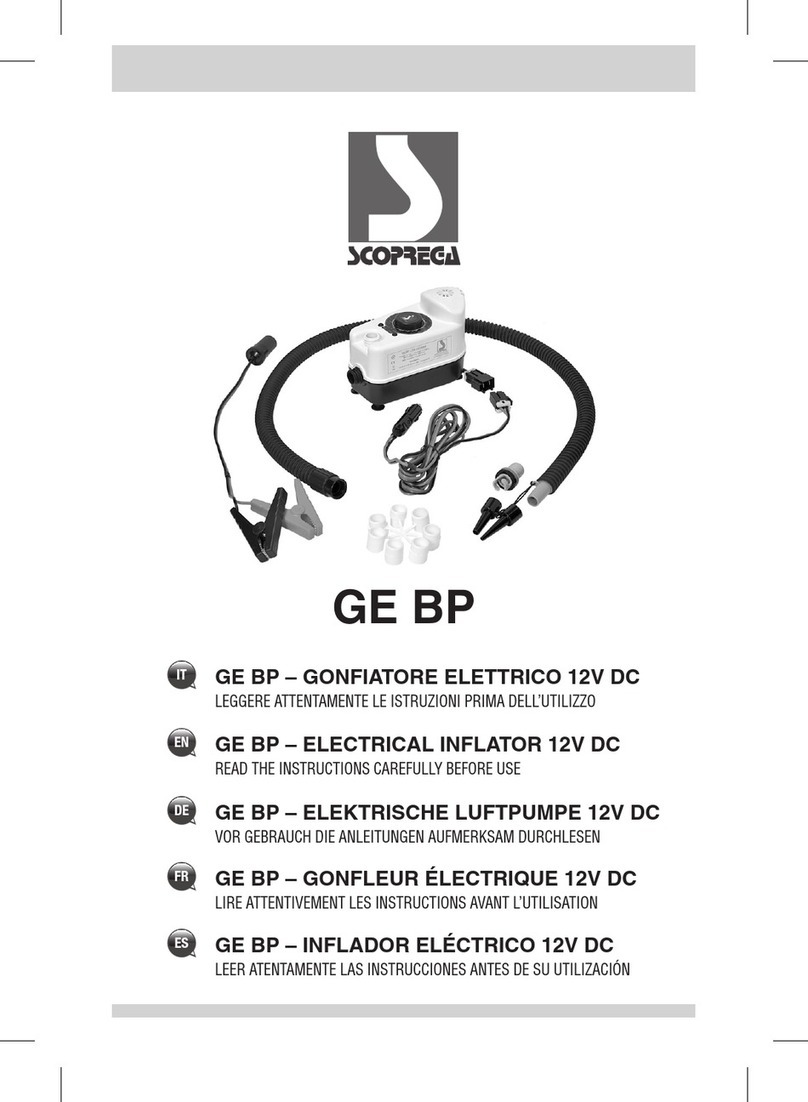
SCOPREGA
SCOPREGA GE BP instructions
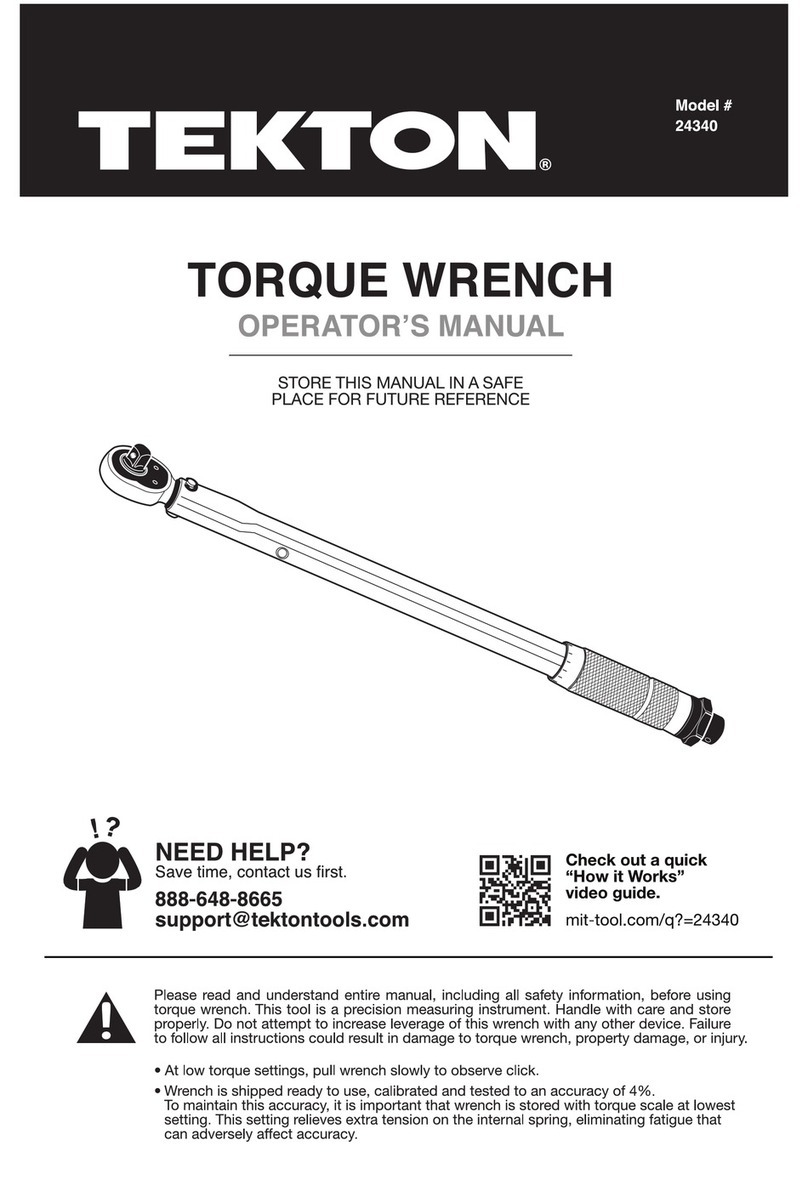
tekton
tekton 24340 Operator's manual

Cres Cor
Cres Cor Star Series Carving Stations IFW61RR Installation and operating instructions
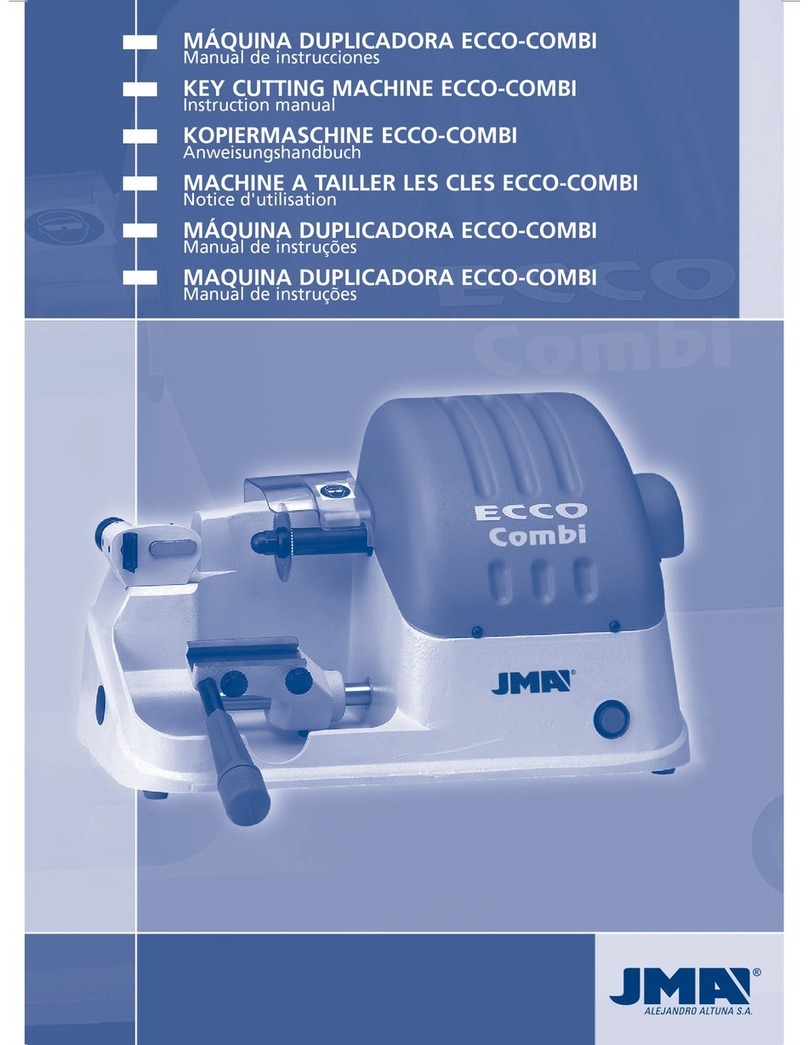
JMA
JMA ECCO-COMBI instruction manual
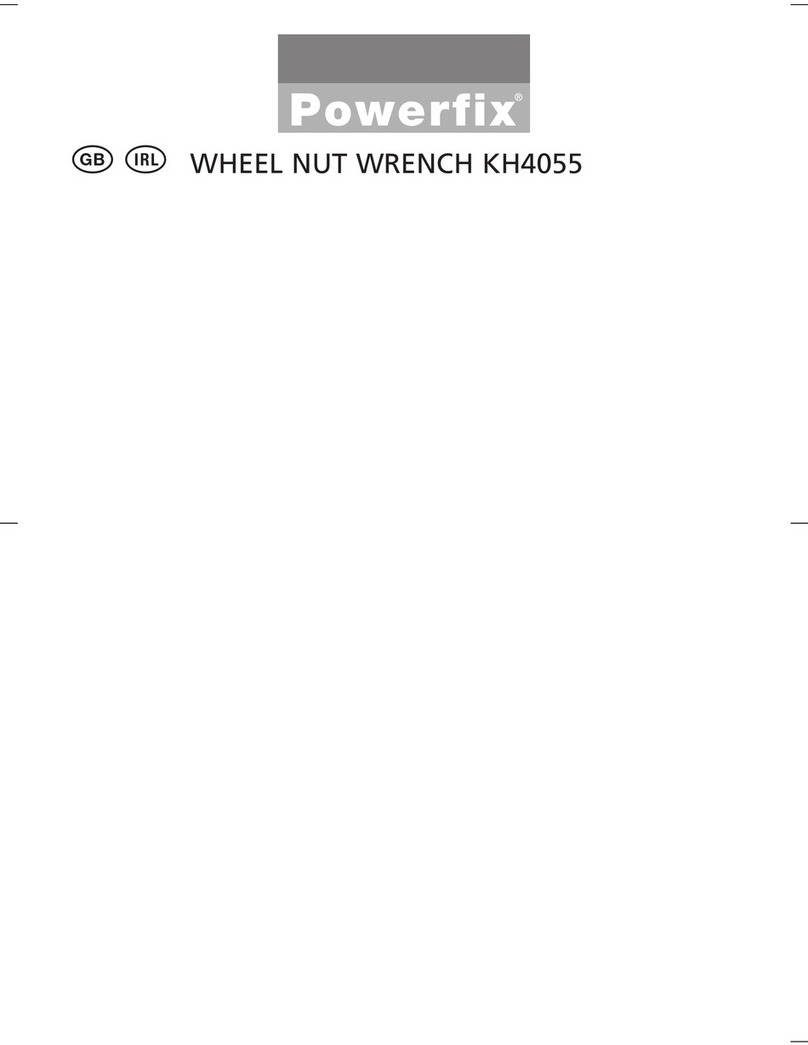
Powerfix
Powerfix POWERFIX KH4055 operating instructions
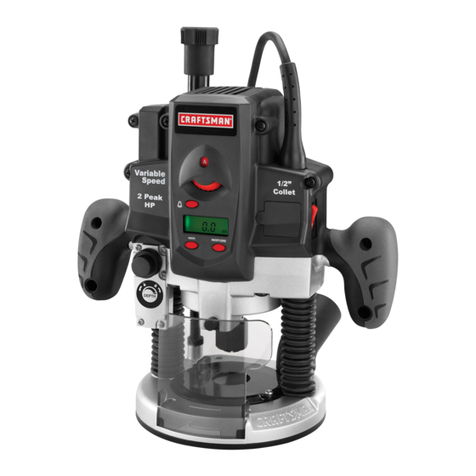
Craftsman
Craftsman 315.175170 Operator's manual
